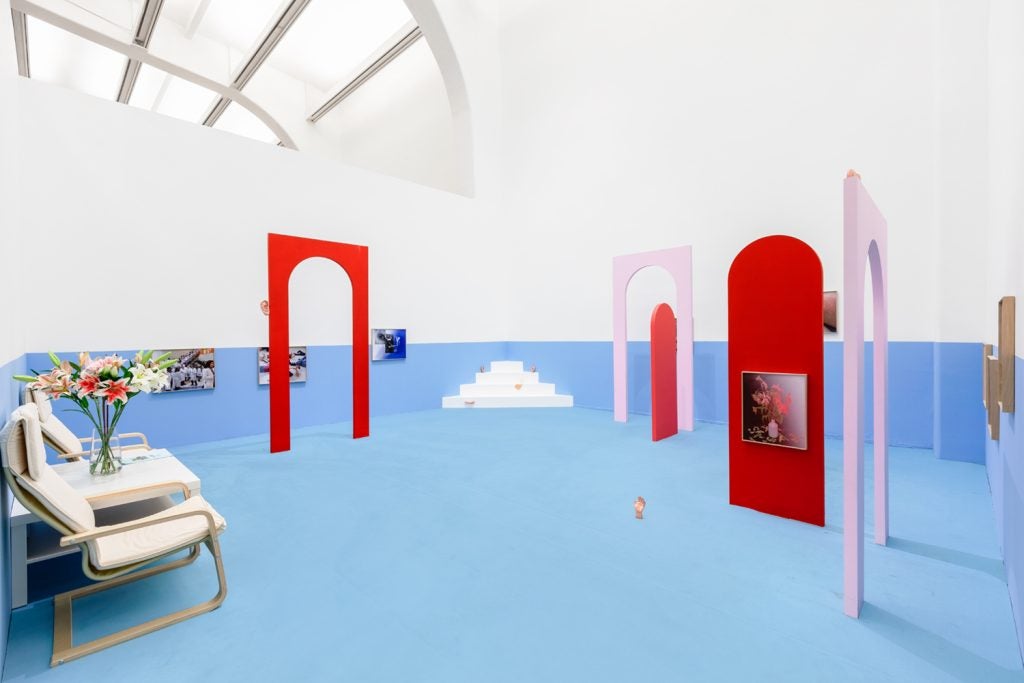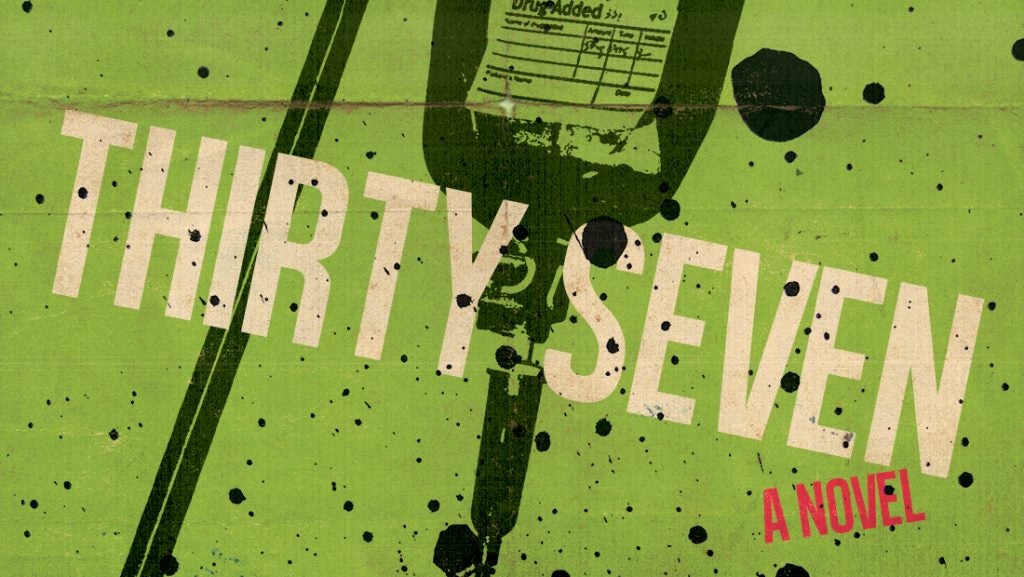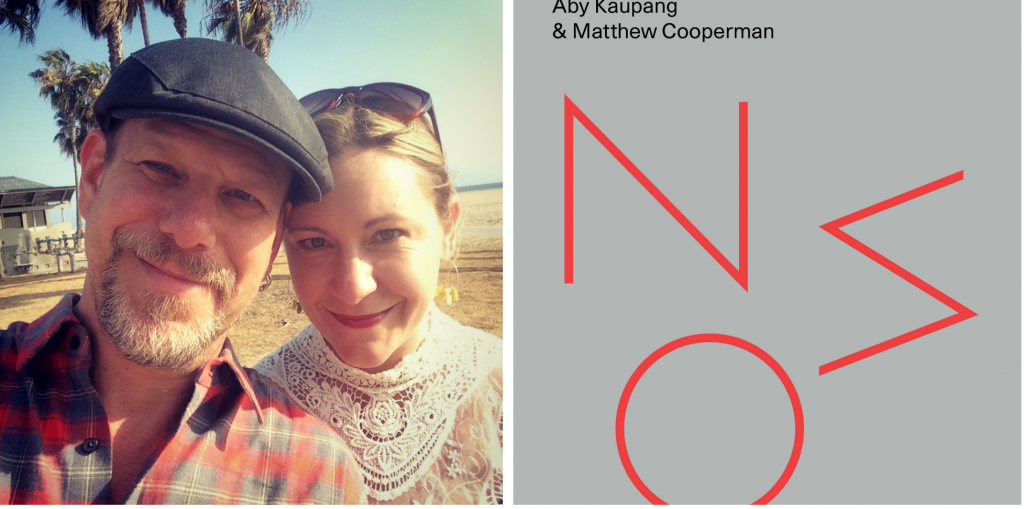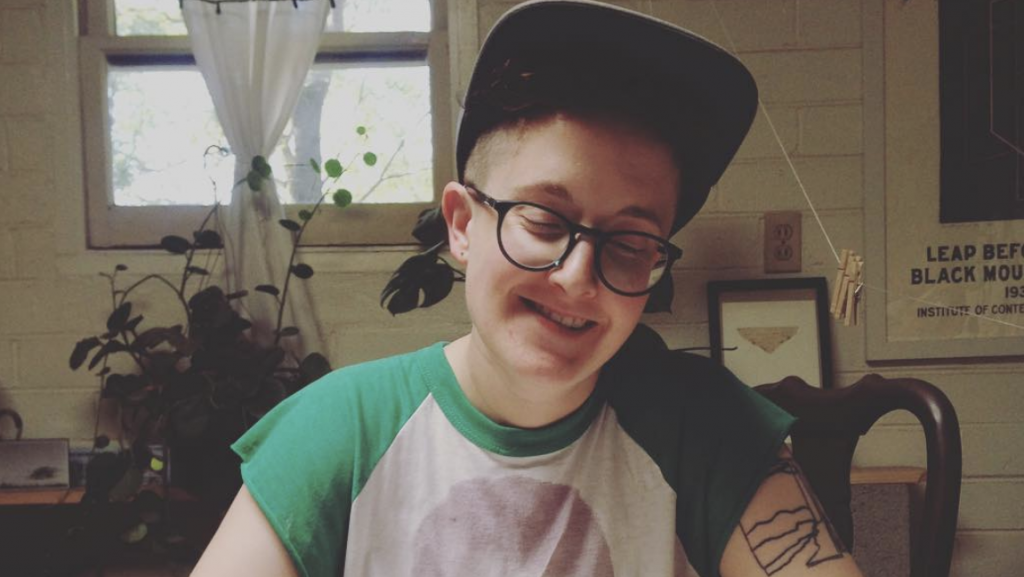Cover Image: The Purpose of Disease, Amiko Li and the UCCA Center for Contemporary Art.
Amiko Li is a Shanghai-born, Brooklyn-based queer visual artist currently teaching at Smith College, having earned his MFA from Rutgers University and his BFA from the School of Art Institute of Chicago. His works appear in The New Yorker, American Photography, Juxtapoz, Lens Magazine, Adbusters, and other places. Holding exhibitions and residences across Asia, Europe, and North America, Amiko engages with multiple locales of transnational exchange while exploring liminal spaces of intimacy and alternative forms of political radicality through the “quiet work” of camera.
Asa Zhang (AZ): You prefaced your work-in-progress, Passaggio, with questions about the limit of linguistic expression: Can images be more powerful than words? How can I describe my feelings if I don’t have the vocabularies? In your view, what is it about “seeing” that is uniquely intuitive and less articulable by human language?
Amiko Li (AL): These questions emerged from moments in the past when language––especially the English language––failed me and reminded me of my foreignness. I wrestled a lot with cultural-linguistic barriers when I first came to the United States, and photography was what afforded me consolation at the time. The silent language of the camera seems to promise a kind of universal tongue I could dwell in and claim now and then as mine.
It was only afterwards that I realized that photography has its interpretive imperative as well. Restoring my faith in actual languages bit by bit, I began to foster a symbiotic relationship between the images and words I juxtapose in my exhibitions. I started to think that perhaps the distinction between “seeing” and “reading” is as arbitrary as that between what we tend of think of as the extra-linguistic and the intra-linguistic––not to reiterate “Il n’y a pas de hors-texte” but to say that it is perhaps less meaningful to make these theoretical distinctions than to simply seize what is empirically available and make what we can out of it. What’s truly meaningful to me is artistic practice, and I wish for mine to be always situated in “transit(lat)ions” ––if I shall resort to theory at all––which is a word I’ve coined to explain the status of transition I never cease to feel and the act of translation I never cease to want to perform. Formal questions are secondary and less interesting, I think, than simply trying to register the ineffable. To me, praxis comes before theory. I’ve always felt an urgency to create and curate, but not to theorize.
AZ: What do you think most about in your practice of photography and visual arts?
AL: The question of “control,” of course! This might sound counterintuitive, but photographers do grapple a lot with just how much agency they have. Many people would assume that photography is spontaneous and reliant on chance encounters, but it actually involves careful maneuvering of technological apparatuses. However, what eventually matters––which is also what is challenging––is not how efficient a photographer’s control is but the liberatory possibilities opened up by “un-control”: the deliberate letting go of a photographer’s optical and interpretive authority.
There are many ways to “lose control.” The experiment with voyeurism in Shizuka Yokomizo’s series Dear Stranger and Calle’s work Suite Vénitienne back in the 1980s, for example, have greatly inspired me, as I am most fascinated by the change of dynamics when both the photographer and the subject are in the unknown, like a double-blind study that deliquesces the oftentimes formulaic performativity of the one behind the camera as well as the one under the camera’s gaze, even if both are still complicit in a sort of “staging.” Another way to violate that control would be to include the tools and labors in the actual photograph instead of leaving it backstage in the invisible.
AZ: What is your relationship to the camera if you do not seek to control it? Ariella Azoulay writes in The Civil Contract of Photography that photography affords us a neutral space of negotiation. I feel that your attention to the ethics of “camera’s gaze” really allows for such kind of neutrality and, along with it, a politically enabling effect of decentering.
AL: I’ve always thought that although the camera does not have a life of its own, it is not merely a medium and can actually heighten or weaken the given status of power in different hands. It is exactly such neutrality that allows it to accommodate both the intimate and the distant, the personal and the political. In my experience, my camera is perpetually closer to the animate and inanimate objects I try to capture and translate, for it has a bigger capacity for intimacy than me. What is most intimate is the most neutral, I’d say. This sort of ethical elasticity unique to the camera’s neutral “seeing” is where its political potential lies, if one does not seek to control it but try to form a living assemblage with it––decentering the camera as well as oneself.
AZ: You once said that your approach to culture is aleatory, consisting of reenactments, exchanges, and mistranslations. How do you see your works in relation to Culture with a capital “C”––the mainstream and the established?
AL: The ideal would be that my works are not for digestion or consumption. Instead, they would be generative and resonant on a universal level. I hope that they would thrive beyond the logic of the capital and that they would be my very own intimate translations of how the personal is always intertwined with the political. I hope they would exist beyond the commercialized compartments of the art market, although this may not always be realistic. Ultimately, I wish for my works to be tactile expressions of what awaits articulation in the recesses of our social experiences. To the many narratives of abstracted difference in today’s world, as regard to gender, sexuality, ethnicity, so on and so forth, what I hope to provide are rather intangible things: traces of minor feelings, ephemeral impressions and visions. I agree with Gilles Deleuze’s radical claim that “a work of art does not contain the least bit of info”––it does not suffice for art to be didactic, ideological, or aimlessly descriptive. Art should be about the most concrete and intimate of lived experiences––corporeal and incorporeal, individual and communal––above everything else.
AZ: “The Purpose of Disease,” debuted in 2019, is pre-Covid but so prescient of the crisis we experience during Covid. What does this cluster of work mean to you in retrospect?
AL: The idea central to that project is to “perform disease” as a way to discover our rhetoric around the idea of disease and our social relationship to it. The overlapping and the discrepancy between the performance of illness and real symptoms of disease led me to contemplate the evolutionary trajectory of human beings in a broader sense: that the history of our understanding of diseases parallels the genealogy of its rhetorical construction. This project came from an instinct, and I did not realize how relevant and “political” it was until later––but again everything can be political. Same with my more recent work “capsule, straw,” where I drop strange clues to the audience––scattered texts, abandoned pet fish, and scribblings––so that they can piece together a scene of disappearing for themselves. I want to heighten the sense of the sudden suspension of mundane routine as a result of an individual’s awakening and subsequent flight from the institutional system.
AZ: Do you experience the west and the east–– pardon me for invoking this problematic geographical dichotomy––as very different locations of alienation and belonging? How has your cultural identity, or your identity-in-flux, influenced your work?
AL: When I came to the States at the age of eighteen, I felt an intense urgency to capture everything in the new environment, to take photos of the milieux I was thrown into. Photography was my way of engaging with the new world and mapping its wonders and confusions. It was like cartography and felt warmer to me at the time than actual languages. The alternative language it offered me was that of care, for the “humble materials” of the everyday I would become very obsessed with over the years. So yes, I did experience the west as a place of foreignness at first––but it became a contact zone for me simultaneously, and I learned to inhabit that zone through my camera. Years later, I again began to think about the question we started with, about the idiosyncratic language of the camera, when I started studying linguistics and neuroscience. I pondered a lot over language’s relationship to thinking and consciousness and how alternative languages might lend expression to alternative epistemologies and bring them into sharp relief. Japanese, for example, has more words for different shades of blue than any other language, which makes us “see” the hues on a richer linguistic stratum.
I started to consider, too, if language per se is essentially translation––and wonder if the visual “language” bespeaks something unique about human emotions and intimacies that spoken or written languages simply cannot access. The parameter of such translation, I would imagine, is not how effective communication is but the release of something that has long been in the virtual awaiting utterance through the mediation of camera. I’d consider my earlier work “Roche Limit” one such effort. I titled the collection with a term from celestial mechanics that refers to the minimum distance to which a large satellite can approach its primary body without being torn apart by tidal forces. It is not only a great metaphor for a photographer wondering what the safest proximity with her subject would be if she does not wish to lose her sense of self. It also captures my own experience, returning from a trip back to my home city, Shanghai, in the spring of 2018. Being queer and non-conformist in China and an ethnic minority abroad, I rarely feel at home in any place. “Roche Limit” is in that sense a measuring of my situation of non-belonging––so close to a location yet being constantly pushed away from it, forever asymptotic. Many of my works are fueled by such experiences in the “third space” of hindered intimacy.
AZ: I am enthralled by the subtle, intimate facets and resonances in your photographs, thinking especially about the seemingly repetitive but dissimilar groups of photographs in “Echo, Shadow, Translation” and the non-performative and impenetrable looks of your subjects in Maiden Voyage. What is your relationship to the subjects you capture with your camera?
AL: My usual practice is to spend about an hour with my subjects of photography before we get to work––just staying with them. I consider it a duty to let people befriend my camera before exposing them entirely to its gaze. In this way the camera would be able to get close enough to their vulnerabilities and submerged feelings. It’s like allowing for the camera to perform seduction, the slow cultivation of the right distance. I practiced this a lot in the making of my early works and now almost feel that I’ve acquired a sort of proficiency in it.
AZ: How has it been balancing teaching and art practice, being in academia but also a practicing artist?
AT: To me, being in academia is both a gain and a reconciliation. I do feel that I wrestle with certain aspects of it, especially theory’s occasional disconnect with practice. I try to steer away from overgeneralization and over-interpretation as much as possible. However, being in academia does compel me to think about what representation means––me being foreign and queer––and how my work can do justice to my intersecting identities in a broader sense. I’ve been given some space to reflect on what my mission is as an artist in relation to what others consider theirs––that my work is more of quiet portrayal than loud activism. I believe that some experiences are universal and that I can capture the tiniest moments of clarity and revelation with my camera. This I consider my way of connecting to people and making a difference both in academia and beyond. My methodology would be constant mapping, non-stop reflection, and to be always on the move myself.
AZ: It seems that teaching is a transitional phase in your career. Could you tell us more about your plans for summer?
AL: Passaggio is the first chapter of my larger ongoing project that explores voices in transition. Over the summer, I will integrate other forms of performances into it, combining words with sound, and try to foreground the verbs and nouns we employ to reconsider our relationship with these built-in modes of linguistic speech-acts and interactions. I want to “mistranslate,” misusing photographic gaze and linguistic expression together to discover new facets of meaning-making experience writ large. I also hope to embrace my identity as a non-native English speaker even further, to use my localized experience to explore new epistemologies, and to go beyond normativity. It may sound like a near Sisyphean task, but it’d be one that I take genuine delight in, one that never reaches closure, I hope.







